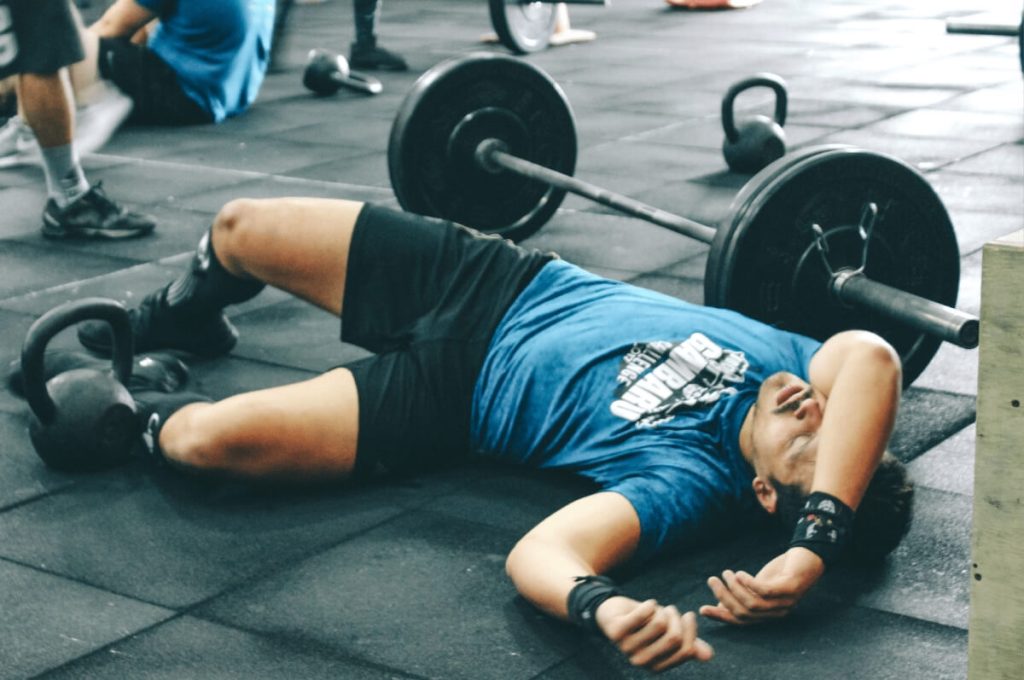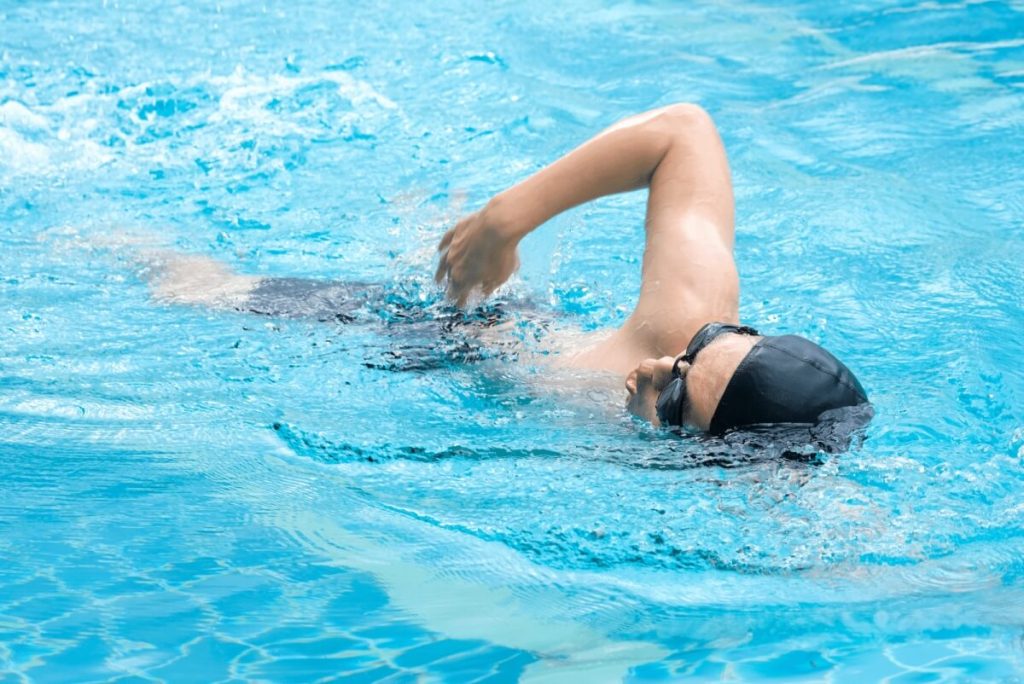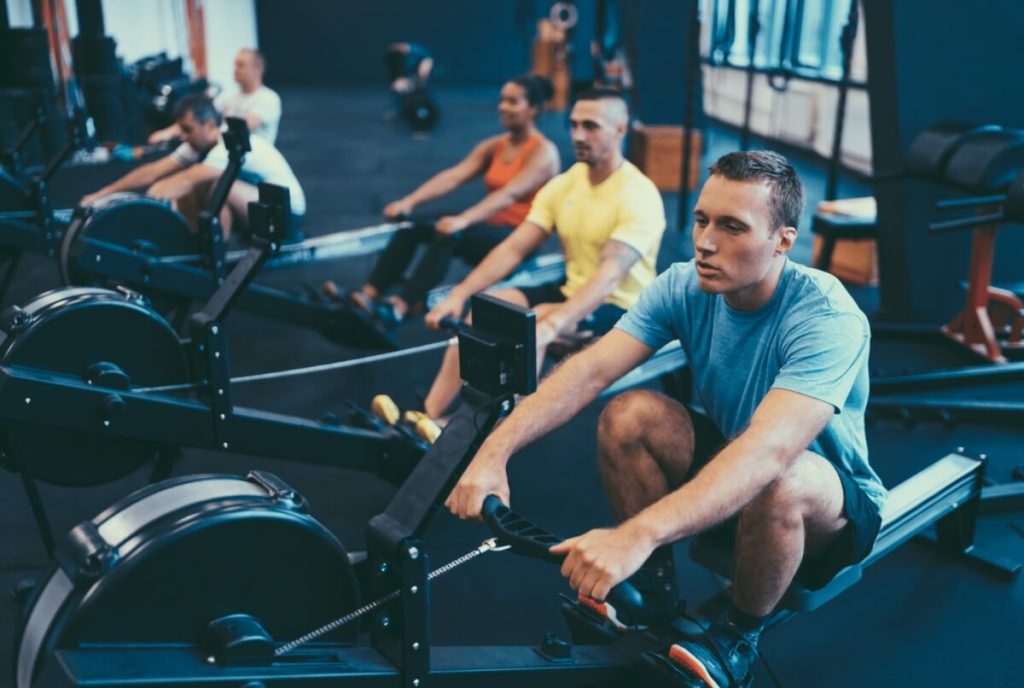
Is HIIT better than steady-state cardio for fat loss?


Is HIIT better than steady-state cardio for fat loss?
Should HIIT take the place of endurance cardio like running, walking, hiking, or biking? In this article, we’ll take a look at both types of exercise and how they affect your ability to lose weight, gain muscle, and support heart health.
What Is HIIT?
HIIT training refers to very intense exercises performed in short bursts with an all-out effort to raise your heart rate to at least 85% of your max heart rate. In between these bursts are short periods of rest or low-intensity activity.

These exercises could be simple exercises you’d do for LISS, such as running, sprinting, jumping jacks, biking, rowing, or even dancing. Alternatively, they could be strength training exercises such as squats, deadlifts, pushes, pulls, kettlebell swings, or more. The key difference is that it feels so intense you have to catch your breath and can’t continue with the same intensity for more than a minute or two.
These HIIT workouts can last anywhere from four to 30 minutes, depending on your fitness level. Many weightlifters add a short HIIT workout as a finisher toward the end of their workouts.
What Is Low-Intensity Steady-State Cardio?
In contrast to HIIT, LISS is low to moderate intensity exercise sustained for longer periods (generally 30-60 minutes). Rather than changing the intensity in intervals, these cardio workouts require a continuous, steady effort. The range in which you maintain your heart rate is up to you and the level of exertion you want to achieve.
The focus of steady-state cardio is on endurance. Similarly to HIIT, you can do steady-state cardio virtually anywhere. Some common examples include:
- Going for long runs or walks
- Swimming laps in the pool
- Bicycling
- Hiking
or any other activity you choose as long as you maintain a steady pace.
To understand how these two types of exercises affect your physiology, let’s talk about how your muscles generate energy to fuel these exercises.
The Three Energy Generation Systems in Your Muscles and How HIIT and Steady-State Cardio Utilize Them
As you exercise, your muscles need to contract to keep your body moving. The energy source to make this happen is adenosine triphosphate (ATP).
We only store small amounts of ATP in our muscles. When you exercise, your body must regenerate ATP at the same rate it needs it. You have three different energy systems in place to generate energy in your muscles:
- Phosphagen or creatine-phosphate system, which provides the fastest source of ATP. It also runs out fast, usually in about 10-30 seconds.
- Glycolytic is the second-fastest energy source. However, it usually runs out in two minutes.
- Mitochondrial respiration is the slowest and most sustainable source of energy. It lasts for hours.
Your cells produce ATP for energy. In the creatine-phosphate and glycolytic systems, production happens in the cytoplasm, the fluid outside the cell’s nucleus. Mitochondrial respiration occurs in your cells’ “powerhouses,” the mitochondria.
Each of these systems works together to provide energy to your muscles while you’re working out. Still, depending on the intensity and duration of your exercise, your body will pull more energy from one pathway than the others.
The creatine-phosphate and glycolic systems work without using oxygen, otherwise known as anaerobic metabolism. On the other hand, mitochondrial respiration uses oxygen, which is where the term “aerobic exercise” comes from.
Creatine-phosphate system
Your muscle cells contain a high-energy phosphate compound called creatine phosphate, a phosphagen. After your ATP stores are quickly used up, your body uses creatine phosphate to create ATP during the first 10-30 seconds of exertion.
First, an enzyme called creatine kinase removes the phosphate group from creatine phosphate and transfers it to adenosine diphosphate (ADP) to then form ATP. It’s the quickest way for your muscles to generate ATP, but it’s also the shortest-lived. At maximum physical effort, ATP generated from the creatine phosphate system can last for no more than 10-30 seconds.
The creatine-phosphate system is critical to intensive explosive physical movements such as
- Jumping
- Throwing
- Hitting
- Sprinting
- Heavy lifting

While ATP from the creatine-phosphate system is quickly used up, it can also be quickly replenished. When in recovery, it takes only 30 seconds to recover 70% of phosphagens and just 3 – 5 minutes to reach 100%.
As you’re probably guessing by now, this system is critical for HIIT workouts. Your muscles rely on phosphagens to get the ATP to complete those high-intensity bursts throughout the workout while also building in recovery time to allow your body to replenish your phosphagen levels.
It is not the only system at play, however. In HIIT workouts, the high intensity lasts longer than the 10-second maximum that the creatine-phosphagen system can provide. Your muscles rely on the glycolic system for the rest of the high-intensity interval.
Glycolytic system
Once your muscles have used up their quick burst of energy from the creatine-phosphate system, the second system that steps up to provide ATP is the glycolytic system.
Your muscles have large reserves of carbohydrates stored in them, called glycogen. Glycogen is made up of a chain of glucose molecules. Your cells break apart the chain and use the glucose molecules through a series of 12 chemical reactions to make ATP.
Like the creatine-phosphate system, the energy doesn’t last too long. The glycolytic system produces enough ATP to last about two minutes. After 2-3 minutes, however, your muscles begin to fatigue as lactic acid, a byproduct from the glucose metabolism, accumulates. You may also be sore for days afterward.
During a HIIT workout, the high-intensity portion of your workout happens through the creatine-phosphate and glycolytic systems working together to give you that burst of energy. Switching over to the rest periods allows your body to recover some capacity for the phosphagen and glycolytic system. However, in between your HIIT sessions, your mitochondrial fat-burning system kicks in.
Mitochondrial fat-burning system
The final energy system that supports your muscles beyond the first few minutes of your workout is mitochondrial respiration, which requires oxygen. With this energy system, your muscles can break down glucose, fatty acids, and ketones completely to form ATP.
The fuel for respiration comes from one of three sources:
- Glycogen or fatty acids from your muscles
- Fatty acids and ketones from your body fat – you become a fat-burning machine!
- Blood glucose from your food or liver glycogen stores
While mitochondrial respiration produces ATP at the slowest rate compared to the other systems, it can supply your muscles with energy for hours or for as long as fuel is available.
Mitochondrial respiration is the primary source of fuel for LISS workouts. Just because HIIT depends on the quicker response of the phosphagen and glycolytic systems doesn’t mean you don’t also get the fat-burning benefits of mitochondrial respiration. Your body depends on mitochondrial respiration to recover between intervals and after your workout.
All three energy systems produce ATP for your muscles at any given time, no matter what workout stage. However, by choosing exercise type, intensity, and duration, you can prioritize training for specific energy systems. As a result, your body adapts to more efficiently use the energy systems you use most frequently.
The Afterburn Effects of HIIT (Post-Exercise Energy Consumption) and Steady-State Cardio
Although HIIT doesn’t burn a lot of fat during the exercise, it produces the afterburn effects that could make it even more effective than LISS would.
The benefits of working out don’t end when you stop exercising. Your metabolism gets a boost, and you keep burning calories long after. Scientifically, this is called excess post-exercise oxygen consumption (EPOC) but is more commonly referred to as “the afterburn effect”.

Afterburn occurs because your body consumes more oxygen to support workout recovery after your workout. The more ATP you use during your workout, the more calories you will burn to replace ATP during recovery. The intensity and duration of exercise can influence the afterburn effect.
The more intense your workout is, the more calories you burn to recover fully. A meta-analysis of studies explored the relationship between exercise intensity and duration and the afterburn effect.
- Overall, those participants participating in high-intensity exercise experienced a greater afterburn effect than those completing low to moderate-intensity exercise.
- When it comes to duration, the afterburn effect increases as the length of the workout increases, but overall does not have as significant an impact on afterburn as intensity.
How long the afterburn effect lasts is unclear. Some studies show just 15 minutes following exercise, while others say that it could last for hours.
Because your body adapts to the physical demands you ask of it, the afterburn effect can decrease over time. Adaptation occurs more easily with steady-state cardio than with HIIT. To counteract it, you must ensure that your workouts are consistent yet varied, constantly challenging you to reach a new level.
So, between HIIT and LISS, which is the winner regarding the afterburn effect? HIIT is the clear front-runner. It is filled with high-intensity activity known to increase afterburn. Because it incorporates a large amount of anaerobic exercise (without oxygen), you end up with a bigger oxygen deficit that your body will have to rebuild in recovery. This means faster metabolism and more fat-burning.
Steady-state cardio will not increase the afterburn effect as much as HIIT. We know that workout duration does not affect your metabolism as much as intensity. Because LISS relies predominantly on aerobic (with oxygen) mitochondrial respiration, there is less of an oxygen debt that must be replenished post-workout.
What about the other health benefits of HIIT and steady-state cardio workouts? Is HIIT always the clear winner? Read on to find out.
HIIT vs. Steady-State Cardio Comparisons
We know that HIIT is more likely to increase your metabolism resulting in continued calorie burning post-workout, but what about more individual factors like fat loss and heart health? We’ll cover each factor in more detail so that you can determine which type of exercise better meets your health needs.
Fat Loss and Belly Fat
When it comes to fat loss, there’s no clear winner between HIIT and steady-state cardio. They are equally effective.
A meta-analysis of 31 studies compared the effects of HIIT and steady-state cardio on fat loss. Regardless of the subjects’ group, there was no significant difference in the amount of total fat loss they experienced. This is great news if you don’t have time for a longer workout.
In a study of 1,009 men between the ages of 71 and 91, researchers wanted to know whether low or moderately intense physical activity was more effective in reducing body fat in the older population. While moderately intense activity was most effective, both types of physical activity resulted in lower BMI. For every 30 minutes of activity per day:
- Moderately intense physical activity reduced BMI by .72.
- Low physical activity reduced BMI by .33.
Additionally, whether the bouts of physical activity lasted more or less than 10 minutes, participants experienced the same health benefits.
The most important factor in the above study was the reduction in sedentary behavior. This is great news for older individuals who may already find physical activity challenging. Just getting up and getting moving can result in weight loss. The same is true for younger ages.
For some people, an advantage HIIT may have over steady-state cardio is that it could increase satiety, leaving you less likely to overeat, thereby helping you achieve your weight loss goals. This is not true for everyone, however.
In a study of 11 obese individuals, researchers examined the effects of exercise on satiety. Subjects completed, on separate days, a steady-state cardio workout, a HIIT workout, or were sedentary. While there was no difference in hunger after sedentary and steady-state cardio workout days, subjects experienced reduced hunger on days they completed a HIIT workout.
A separate controlled study of 80 individuals with type 2 diabetes suggests that the effect of HIIT on your appetite may depend on your weight. 40 normal weight subjects and 40 obese subjects completed 12 weeks of HIIT sessions. Those subjects with obesity were more likely to experience hunger after a HIIT workout than normal-weight subjects.
To understand how HIIT affects your hunger, pay attention to how you feel after a HIIT workout. If it seems to make you hungrier, be mindful so that you don’t overeat and undermine your efforts.
Overall, when it comes to fat loss, movement is king regardless of what form it takes, as long as you somehow generate a caloric deficit. If you want substantial weight loss long-term, you’d need both diet and exercise. Also, continuing to challenge your body is key to reaping the most benefits from exercise, so it’s important to switch up from what you’ve been doing and progressively increase the intensity.
Heart health
One of the biggest determinants of overall health and cardiovascular risk is your aerobic capacity, measured by the maximum amount of oxygen (VO2 max) intake during physical exertion.
In a meta-analysis of 36 studies, researchers explored the relationship between HIIT and steady-state cardio and its effects on the cardiovascular system. While the results were identical regarding their ability to lower blood pressure, HIIT provided a distinct advantage. Subjects who completed HIIT workouts increased VO2 max at a higher rate than those who completed steady-state cardio.
Another meta-analysis determined that longer high-intensity intervals in HIIT workouts (about 3-5 minutes) were more effective at raising VO2 max than shorter intervals.
The above study results are not to say that steady-state cardio doesn’t provide cardiovascular benefits. It certainly does. Steady-state cardio increases VO2 max, just not as quickly as HIIT, and with additional time investment.
While these study results show great promise for heart health, it does not mean that HIIT workouts are a good fit for everyone. Always consult your doctor before beginning a new exercise routine. The most important thing is to avoid being sedentary.
Endurance
When I think about endurance exercise, the first thing that comes to mind is marathon runners. With this mental image, I would then assume that steady-state cardio is most effective at improving physical endurance. I would be wrong. HIIT exercise is actually equally and likely more effective.
In fact, long-distance athletes use HIIT as a way to enhance their endurance capacity.
In a study of 28 active, healthy males, researchers studied the frequency of HIIT sessions on endurance capacity (measured as time to exhaustion) using a steady-state maximum test as a baseline. Participants completed six HIIT sessions either over five days or over two weeks.
Compared to the steady-state endurance baseline, completing six HIIT sessions in just five days resulted in the same increased endurance capacity as over two weeks. Both groups increased their endurance by about 80%.

Steady-state cardio is still a great way to increase your endurance without as much physical stress. While it won’t take you to the same upper limits and as quickly as HIIT, it’s still effective.
A study of 34 recreational runners compared the effects of HIIT versus LISS training on half-marathon performance. For 12 weeks, two groups of runners either:
- Ran two hours and 30 minutes twice a week on the weekend or
- Completed four 30-minute HIIT sessions and one 30-minute run during the week
Both groups completed the half-marathon without any significant difference in performance.
Therefore, both HIIT and steady-state cardio can help you reach your endurance goals. Which exercise you choose can be determined by how quickly you want to reach your goal and what kind of exercise you prefer.
Muscle building and sparing
While major muscle gains shouldn’t be your goal with either HIIT or steady-state cardio, they still play an important role in muscle growth for some groups of people and in preventing muscle loss. Both forms of exercise increase protein synthesis, which promotes muscle growth.
HIIT is particularly effective for people with obesity or those at risk of muscle loss. When you complete a HIIT workout, the short burst of high intensity puts high tensile stress on your muscles, resembling resistance exercise and promoting muscle growth.
In a controlled study of 44 overweight men and women, subjects completed nine HIIT training sessions over three weeks. Those who completed the training experienced more muscle growth than the control group.
Another study examined the location of muscle gain from HIIT exercise. Participants experienced the greatest muscle gain in their trunks and legs. These are the muscles most commonly used during a HIIT workout.
Steady-state cardio can provide muscle gain similar to resistance training for the muscle groups used.
A literature review compared muscle gain with resistance training to steady-state cardio on untrained subjects. Overall, studies show that resistance training and steady-state cardio increase muscle growth by an average of 7%. However, targeted resistance training is best if you want to achieve a certain look or build significant amounts of strength.
Either HIIT or steady-state cardio is a great option to build some muscle mass or prevent loss. If you’re looking to gain serious muscle, however, it’s most effective to add resistance training to your exercise routine.
The bottom line is that the more you move, the more health benefits you will experience. The great news is that you don’t need to take much time out of your day to reap those benefits. Even short bouts of exercise lasting less than 10 minutes have health benefits. Multiple short workouts add up!
Takeaway
You can reap similar health benefits from HIIT and steady-state cardio. HIIT takes the lead in post-workout afterburn, increasing your cardiovascular health and endurance capacity. The biggest advantage of HIIT workouts is that you can experience the many healthy and physical benefits with less time commitment. There may also be genetic outliers who respond substantially better with either HIIT or LISS on one of these aspects. Focus on:
- Getting at least 150 minutes of moderate physical activity per week
- Maintaining consistency no matter what type of workout you choose
Always speak to your healthcare professional before starting any sort of new exercise routine.
References
- Ito S. High-intensity interval training for health benefits and care of cardiac diseases – The key to an efficient exercise protocol. World J Cardiol. 2019;11(7):171-188. doi:10.4330/wjc.v11.i7.171
- Baker JS, McCormick MC, Robergs RA. Interaction among skeletal muscle metabolic energy systems during intense exercise. J Nutr Metab. 2010;2010:905612. doi:10.1155/2010/905612
- Morton AR. Exercise Physiology. In: Pediatric Respiratory Medicine. Elsevier; 2008:89-99.
- Frewin R. Biochemical aspects of anaemia. In: Clinical Biochemistry: Metabolic and Clinical Aspects. Elsevier; 2014:515-532.
- Dohlmann TL, Hindsø M, Dela F, Helge JW, Larsen S. High-intensity interval training changes mitochondrial respiratory capacity differently in adipose tissue and skeletal muscle. Physiol Rep. 2018;6(18):e13857. doi:10.14814/phy2.13857
- LaForgia J, Withers RT, Gore CJ. Effects of exercise intensity and duration on the excess post-exercise oxygen consumption. J Sports Sci. 2006;24(12):1247-1264. doi:10.1080/02640410600552064
- Børsheim E, Bahr R. Effect of exercise intensity, duration and mode on post-exercise oxygen consumption. Sports Med. 2003;33(14):1037-1060. doi:10.2165/00007256-200333140-00002
- Sevits KJ, Melanson EL, Swibas T, et al. Total daily energy expenditure is increased following a single bout of sprint interval training. Physiol Rep. 2013;1(5):e00131. doi:10.1002/phy2.131
- Greer BK, Sirithienthad P, Moffatt RJ, Marcello RT, Panton LB. EPOC comparison between isocaloric bouts of steady-state aerobic, intermittent aerobic, and resistance training. Res Q Exerc Sport. 2015;86(2):190-195. doi:10.1080/02701367.2014.999190
- Steele J, Plotkin D, Van Every D, et al. Slow and steady, or hard and fast? A systematic review and meta-analysis of studies comparing body composition changes between interval training and moderate intensity continuous training. Sports. 2021;9(11):155. doi:10.3390/sports9110155
- Kolnes KJ, Petersen MH, Lien-Iversen T, Højlund K, Jensen J. Effect of exercise training on fat loss-energetic perspectives and the role of improved adipose tissue function and body fat distribution. Front Physiol. 2021;12:737709. doi:10.3389/fphys.2021.737709
- Keating SE, Johnson NA, Mielke GI, Coombes JS. A systematic review and meta-analysis of interval training versus moderate-intensity continuous training on body adiposity: Exercise for body fat reduction. Obes Rev. 2017;18(8):943-964. doi:10.1111/obr.12536
- Jefferis BJ, Parsons TJ, Sartini C, et al. Does duration of physical activity bouts matter for adiposity and metabolic syndrome? A cross-sectional study of older British men. Int J Behav Nutr Phys Act. 2016;13(1). doi:10.1186/s12966-016-0361-2
- Fan JX, Brown BB, Hanson H, Kowaleski-Jones L, Smith KR, Zick CD. Moderate to vigorous physical activity and weight outcomes: does every minute count? Am J Health Promot. 2013;28(1):41-49. doi:10.4278/ajhp.120606-QUAL-286
- Holmstrup ME, Fairchild TJ, Keslacy S, Weinstock RS, Kanaley JA. Satiety, but not total PYY, Is increased with continuous and intermittent exercise: Exercise Frequency and Satiety. Obesity (Silver Spring). 2013;21(10):2014-2020. doi:10.1002/oby.20335
- Afrasyabi S, Marandi SM, Kargarfard M. The effects of high intensity interval training on appetite management in individuals with type 2 diabetes: influenced by participants weight. J Diabetes Metab Disord. 2019;18(1):107-117. doi:10.1007/s40200-019-00396-0
- Tamayo Acosta J, Sosa Gomez AE, Samuel S, Pelenyi S, Acosta RE, Acosta M. Effects of aerobic exercise versus high-intensity interval training on V̇O2max and blood pressure. Cureus. 2022;14(10):e30322. doi:10.7759/cureus.30322
- Bacon AP, Carter RE, Ogle EA, Joyner MJ. VO2max trainability and high intensity interval training in humans: a meta-analysis. PLoS One. 2013;8(9):e73182. doi:10.1371/journal.pone.0073182
- Ferri Marini C, Federici A, Skinner JS, et al. Effect of steady-state aerobic exercise intensity and duration on the relationship between reserves of heart rate and oxygen uptake. PeerJ. 2022;10(e13190):e13190. doi:10.7717/peerj.13190
- Myers J. Cardiology patient pages. Exercise and cardiovascular health. Circulation. 2003;107(1):e2-5. doi:10.1161/01.cir.0000048890.59383.8d
- Gibala MJ, Hawley JA. Sprinting toward fitness. Cell Metab. 2017;25(5):988-990. doi:10.1016/j.cmet.2017.04.030
- Atakan MM, Güzel Y, Bulut S, Koşar ŞN, McConell GK, Turnagöl HH. Six high-intensity interval training sessions over 5 days increases maximal oxygen uptake, endurance capacity, and sub-maximal exercise fat oxidation as much as 6 high-intensity interval training sessions over 2 weeks. J Sport Health Sci. 2021;10(4):478-487. doi:10.1016/j.jshs.2020.06.008
- Bagheri R, Robinson I, Moradi S, et al. Muscle protein synthesis responses following aerobic-based exercise or high-intensity interval training with or without protein ingestion: A systematic review. Sports Med. 2022;52(11):2713-2732. doi:10.1007/s40279-022-01707-x
- Callahan MJ, Parr EB, Hawley JA, Camera DM. Can high-intensity interval training promote skeletal muscle anabolism? Sports Med. 2021;51(3):405-421. doi:10.1007/s40279-020-01397-3
- Blue MNM, Smith-Ryan AE, Trexler ET, Hirsch KR. The effects of high intensity interval training on muscle size and quality in overweight and obese adults. J Sci Med Sport. 2018;21(2):207-212. doi:10.1016/j.jsams.2017.06.001
- Martins C, Kazakova I, Ludviksen M, et al. High-intensity interval training and isocaloric moderate-intensity continuous training result in similar improvements in body composition and fitness in obese individuals. Int J Sport Nutr Exerc Metab. 2016;26(3):197-204. doi:10.1123/ijsnem.2015-0078
- Konopka AR, Harber MP. Skeletal muscle hypertrophy after aerobic exercise training. Exerc Sport Sci Rev. 2014;42(2):53-61. doi:10.1249/JES.0000000000000007
- Jakicic JM, Kraus WE, Powell KE, et al. Association between bout duration of physical activity and health: Systematic review: Systematic review. Med Sci Sports Exerc. 2019;51(6):1213-1219. doi:10.1249/MSS.0000000000001933
- CDC. How much physical activity do adults need? Centers for Disease Control and Prevention. Published October 20, 2022. Accessed February 11, 2023. https://www.cdc.gov/physicalactivity/basics/adults/index.htm
